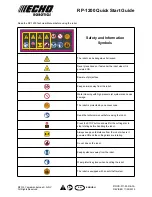
Brooks Automation
P/N: PFD0-DI-00010, Rev 5.0.0, April 9, 2022
Introduction to the Hardware
Copyright © 2022, Brooks Automation, Inc.
13
The first axis of the robot, J1, rotates the robot column about the Z-axis. When inner link is closest to the
bottom, the Z-axis is at its 0 position in the Joint Coordinate system and in the World Coordinate system.
As the robot arm moves upwards, both its joint position and the World Z Coordinate increase in value.
The Z column also contains the 24VDC and 48VDC power supplies. The main PreciseFlex™ controller is
located inside the base housing of the robot, and joint controllers are located near the various joint
motors, distributed throughout the robot.
When the Inner Link is centered on its range of motion the J1 axis is at its 0-degree joint angle. A positive
change in the axis angle results in a positive rotation about the World Z-axis.
The J3 rotary axis (elbow) rotates the outer link about the J3 axis. A positive change in the axis angle
results in a positive rotation about the J3-axis. When the link is centered, it is at its 0-degree joint angle,
however there is a hard stop at 10 degrees, so the link cannot reach the center position. The outer link
can rotate underneath the inner link, allowing the robot to change configuration from a “left hand” robot to
a “right hand” robot without swinging the J3 axis (elbow) through the zero position. This allows the robot
to work in very compact workcells, and minimizes the radius to the payload, and therefore the kinetic
energy of the payload, when moving across a workcell. This helps minimize potential collision forces.
The J4 rotary axis rotates the outer link about its axis. Its travel is asymmetric to allow J5 to be oriented
+/- 180 degrees without hitting a J4 hard stop. The J5 pitch axis provides pitch control for the tool. The
J6 rotary axis rotates the tool about the tool axis.














































